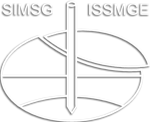Investigation of vibro-driven monopiles in a geo-centrifuge
Investigation of vibro-driven monopiles in a geo-centrifuge
In the context of ever-growing monopile foundation for offshore wind turbines, the use of vibratory driving for very large monopiles is gaining traction due to its potential to mitigate noise emissions, reduce fatigue of the pile, increase the pace of installation, avoid pile-run, and because it is easier to upscale than impact hammers. This research seeks to investigate industry-standard driving parameters and further, aiming to shed light on the driveability and post vibro-driven lateral behaviour of monopiles. Additionally, it aims to compare data against the predictions of existing driveability models, provide a comparison to centrifuge tests on impact-driven piles, and generate a crucial dataset for future numerical simulations of monopile installation and lateral loading. The experiments investigate vibratory pile driving within a scaled 50g environment at TU Delft geo-centrifuge as part of the GEOLAB project FoundEx. Firstly, the scaling of the vibro-driver is detailed, and the testing setup is outlined. Secondly, the performance of the vibro-driver for a standard case is assessed. The testing campaign will aim to explore a range of installation parameters, both for the soil (density, saturation) and the vibro-driver equipment (frequency, eccentric moment, static weight).
Luc Simonin; Hadrien Rattez; Benoit Herman; William Ovalle-Villamil; T. Quinten; Miguel Angel Cabrera; Tamara Wehbe; Olgu Orakci; George Anoyatis; Stijn Francois
5th European Conference on Physical Modelling in Geotechnics (ECPMG2024)
New facilities, new equipment, measuring techniques
https://doi.org/10.53243/ECPMG2024-111
